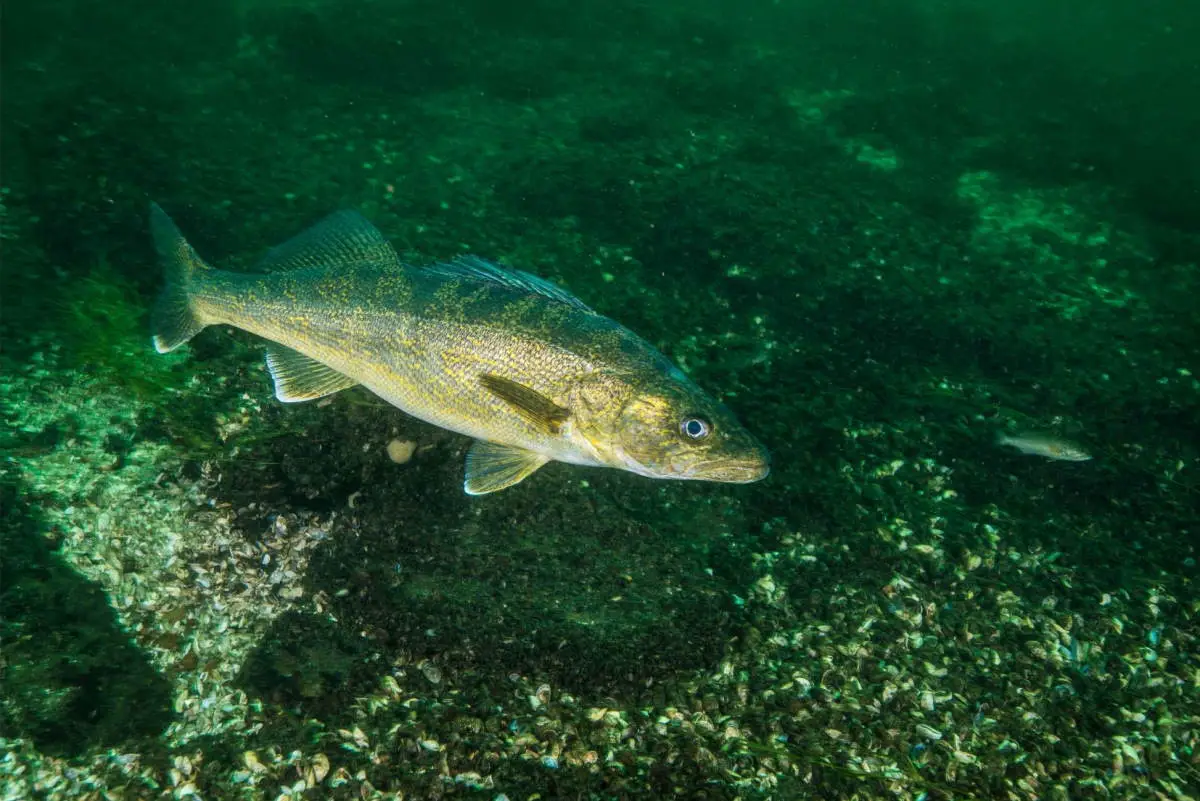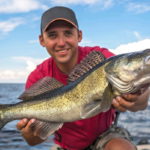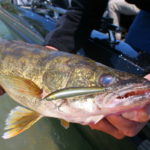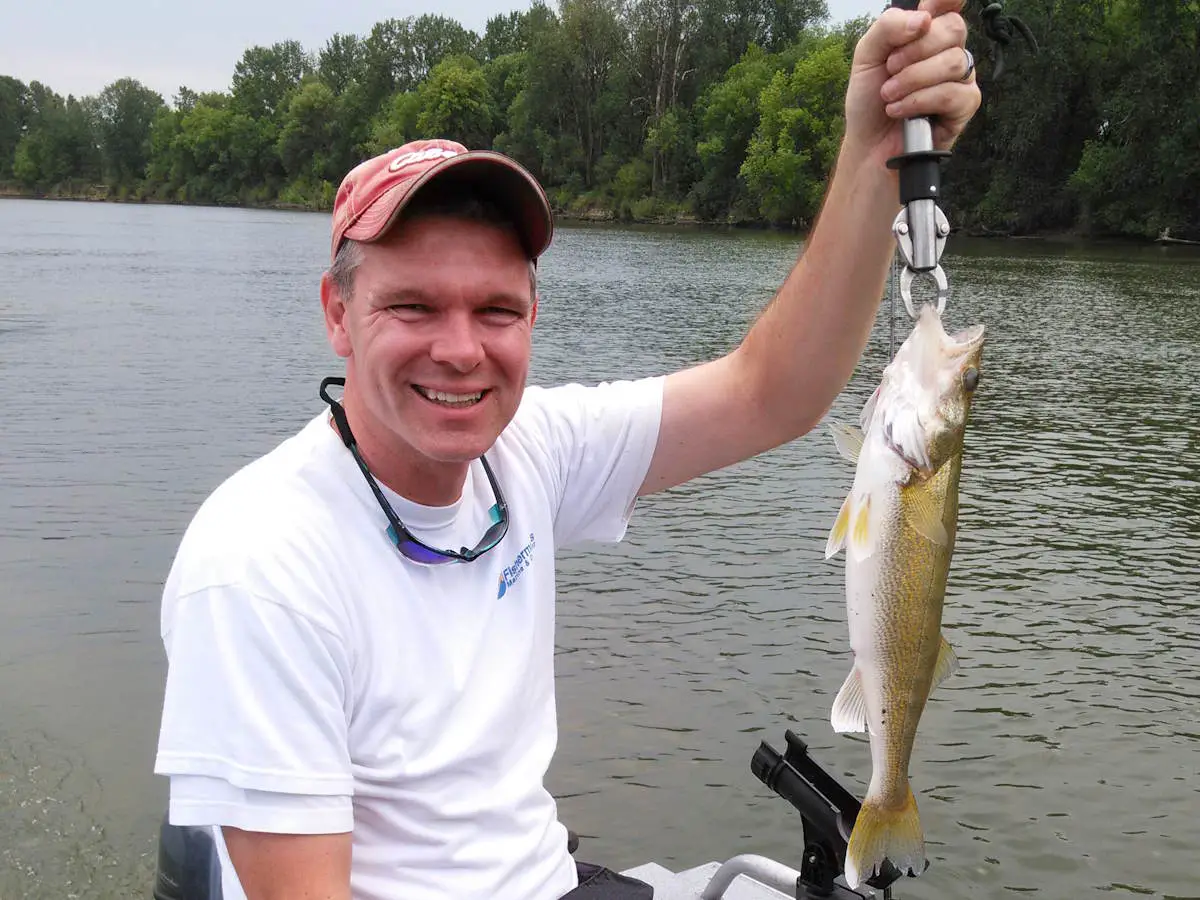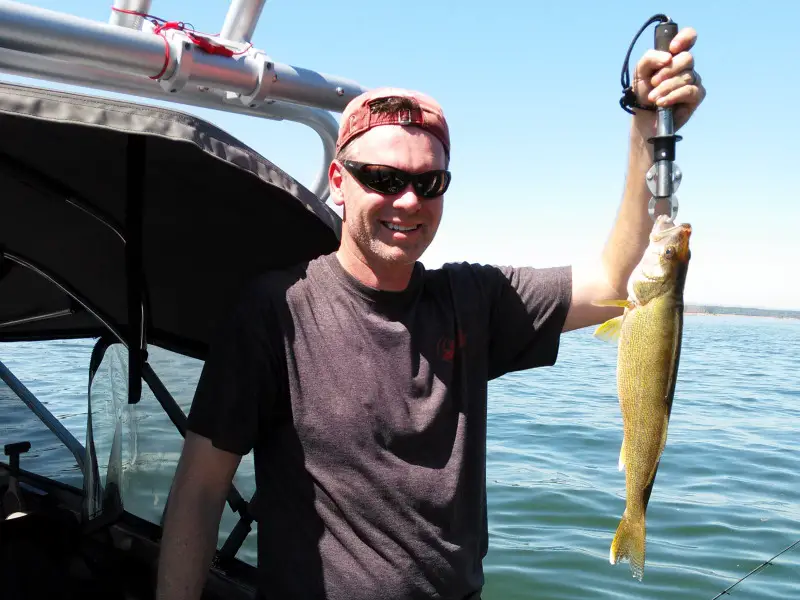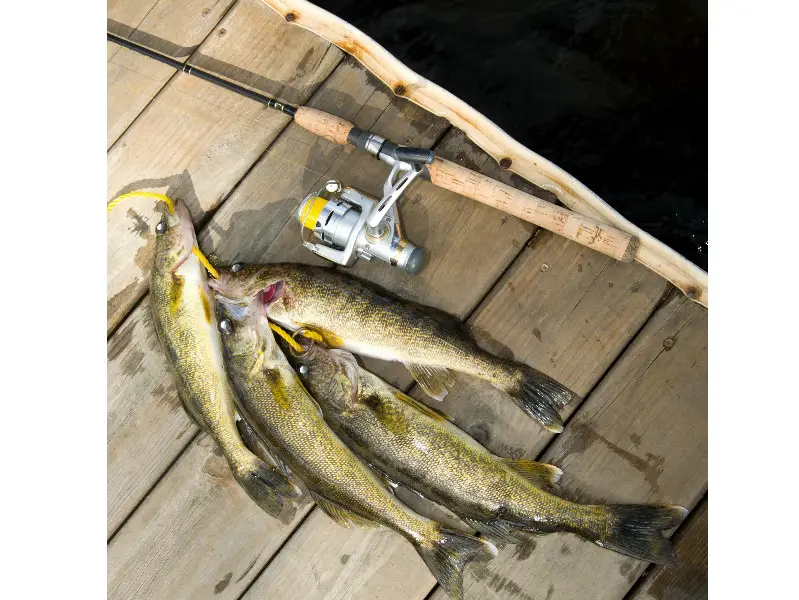Fishing enthusiasts branching out to catch more fish species, such as the walleye, may wonder where the fish live. If you know little about walleye, you might assume they mostly live in lakes, but you’ll be surprised to know that these fish can thrive in the wild in various regions. So where can you find walleye?
Walleye live in quiet, deep, cool, and dark places within the North American lakes, rivers, and reservoirs. Typically, walleye avoid waters with strong currents. Many believe that since walleye are apex predators, the fish also live further south, like Tennessee.
If you want to catch a walleye someday, you must first know where this fish species lives. By doing so, you’ll also understand their habitat and where you can catch larger ones. Keep reading as I cover everything that makes walleye special, where you can find them, and the best times to hook a whopper.
What Are Walleye?
Walleye is a fish species that go by several names: yellow pike, blue pike, marble eye, and pike perch. You may have even heard them referred to by their scientific name, Stizostedion vitreum.
Whatever you call them, they’re a popular fish known for their firm texture and flakey finish when cooked.
If you enjoy a sweeter flavor, you’ll love this pleasant piscine, though they’re less “fishy” than most fish. Because of its more subtle taste, the meat takes on whatever piquancy you prepare it with, including spices, oils, and vegetables. For those who aren’t big seafood fans, walleye might change your mind.
Visually, walleye are known for their distinct olive and gold-toned scales. Sunlight shines through the calm, shallow waters where they live, catching on their scales. Since they’re more active fish, you can spot them at a glance, so finding a good fishing spot is a snap.
Do Walleye like Fast or Slow Moving Water?
Unlike some species, walleye prefer to avoid the rushing water of streams or the heavy waves of the ocean. They’re native to the quiet lakes, rivers, and manufactured reservoirs of North America.
Most often, you’ll find them in certain portions of the Northern United States, like Minnesota and Wisconsin. But the southern regions of Canada host a fair number, especially Ontario.
More recently, populations have been introduced further south in the US, in areas like Alabama and Mississippi. The calm rivers make an excellent location for the heavily fished walleye to replenish their numbers without damaging the native flora and fauna.
Theoretically, walleye could thrive anywhere with quiet, deep, cool, and dark sections where they can hide. Experts argue that this combination and the fish’s status as an apex predator mean the furthest south you’re likely to find them in Tennessee. The largest walleye ever caught in that state was in Old Hickory Lake, weighing an astonishing 25 lb (11.3 kg).
Have Walleye Been Planted?
Walleye have been planted in recent decades to save them from extinction due to overfishing. Conservation groups introduced the fish into new regions where they weren’t native, such as the southern states in North America, specifically Alabama and Mississippi.
The planting was initially successful, especially in those areas where they were added to the existing populations. Other protective measures include:
- Enacting regulations that limit the amount of fishing done on a trip,
- Monitoring fishing licenses,
- Protecting the fish’s natural habitat.
These efforts have brought their numbers back up to nearly pre-threat levels.
Unfortunately, there’s evidence that those populations are decreasing again.
Scientists and environmentalists blame climate change, which has impacted all fish species around the world. As fish families that require warmer temperatures are displaced into once cool lakes and rivers, we see the walleye slowly being pushed out.
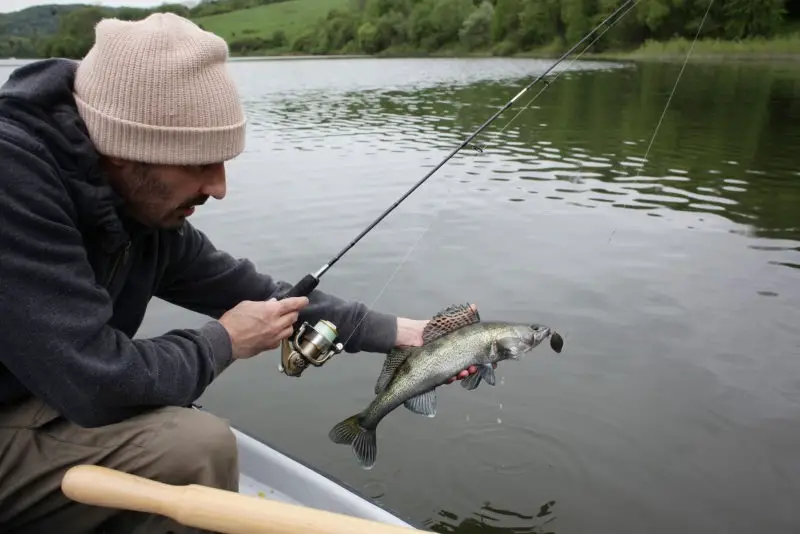
Best Places To Find Walleye
Walleye aren’t year-round fish. If you want to hook one, you should be hitting the lake when it’s cool but not cold or during fruitful mating months for the fish. Fall and spring are the best seasons, and most fishing enthusiasts name October — November and March — April prime walleye time.
If you’re planning your own trip, here are some of the best places according to fish experts:
Lake Erie
Lake Erie is a well-known fishing spot for bass and steelhead, making it excellent for those favoring freshwater varieties. The lake’s sheer size is another benefit, giving you the option to select any number of spots for a secluded day out on the water. For this purpose, we’re looking more at the Pennsylvania and Ohio portions of the lake.
Anyone who has fished in Lake Erie may have come across walleye and been surprised by their size. These adult schools have been expanding in the area. However, most fishing done in Lake Erie is aimed at the other, more common types. You have a vast pool to dip your lure into if you choose to target walleye.
In the spring months, you’ll come across the pikes mating. While this makes the already feisty fish more aggressive, it also brings them closer to land. It’s a great time to sit out on the beach and cast your line rather than taking a boat out into the wider waters.
Once fall comes around, walleye will move a bit further in. But they remain in shallow depths, enjoying the cool temperatures and less intense sunlight. It isn’t until the summer months that the walleye seek deeper hiding spots and are more difficult to hook.
Field and Stream names Lake Erie the number one best spot for walleye fishing in the United States.
Keweenaw Waterway, Michigan
Trophy fishers are going to want to head up to this waterway near Copper Island, Michigan. A dual artificial and natural body of water, Keweenaw Waterway has some fantastic fishing for anyone looking for whoppers rather than roasters.
In-Fisherman says that during the fall months, in particular, you can head up in the morning and easily leave in the afternoon with a walleye weighing more than 10 lb (4.53 kg) to mount. The stained waters they lounge in are nice and shallow, making it a simple matter to suss out a good spot to perch for a few hours.
Not only will you catch a whopper with relative ease, but you’ll also engage in some good old-fashioned volume catching; it isn’t rare to walk away with dozens of walleye in a single day.
Bay of Quinte, Ontario
Are you heading up north into Canada? You have to stop by this tranquil spot in Ontario. Home of the Quinte Fishing Series, the Bay of Quinte holds annual tournaments for both walleye and bass, usually set in July.
If you prefer to stay out of competitions and instead relax with your rods, you can find an incredible variety of species, from walleye to carp to catfish. Thanks to the Trent River, which feeds directly into the bay, you’ll come into contact with a wide array of wildlife.
Conclusion
Walleye live all over North America, so that means there are abundant spots for catching the fish. However, it’s important to note that since they’re highly energetic, they’re slightly more challenging to catch than your average carp. But the preferred shallow waters during their mating seasons ensure that you’ll go home with plenty to show for the trip.
Additionally, walleye make for tasty meals or beautiful and impressive trophies. Their olive color with shining silver undertones is truly unique. A mounted walleye will surely become the treasure of your collection for years to come.
